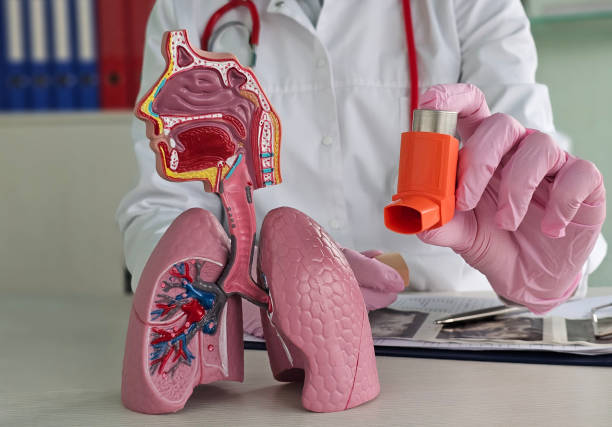Introduction
Alzheimer’s disease (AD) is the most prevalent type of dementia, representing about 60–80% of all dementia worldwide. Alzheimer’s disease is a neurodegenerative disorder that progresses and impacts memory, cognitive function, and the capacity to carry out activities of daily living. As the population ages, the significance of understanding, diagnosing, and treating Alzheimer’s disease has never been more important.
What is Alzheimer’s Disease?
Alzheimer’s disease is targeting the cortex of the brain, shrinking areas involved in memory and reasoning. The characteristic pathological features are amyloid-beta plaques, neurofibrillary tangles composed of hyperphosphorylated tau protein, synaptic dysfunction, and neuronal death (Scheltens et al., 2021).
Symptoms start with slight loss of memory, confusion, and trouble in finding words, advancing to more prominent cognitive decline and loss of independence. Behavioral symptoms like agitation, anxiety, and depression are also prevalent.
Causes and Risk Factors
The exact etiology of Alzheimer’s disease remains unclear, but it is believed to be a multifactorial interaction between genetic, environmental, and lifestyle factors. The most significant risk factors include:
Age: The strongest known risk factor. The majority of people with Alzheimer’s are above 65
Genetics: Mutations in genes significantly increase the risk (Loy et al., 2014).
Family history: An individual’s risk is raised if the disease is present in a parent or sibling
Cardiovascular health: Diabetes, hypertension, obesity, and smoking lead to cognitive impairment.
There is also mounting evidence for the involvement of oxidative stress and chronic inflammation in the disease pathogenesis (Heneka et al., 2015).
Diagnosis
Early and accurate diagnosis is essential for care planning and possible therapeutic intervention. Diagnosis is typically by a combination of the following:
Clinical evaluation: Cognitive screening such as the Mini-Mental State Examination (MMSE) or Montreal Cognitive Assessment (MoCA).
Neuroimaging: MRI and CT scans can rule out other diseases and show brain atrophy typical of AD.
Biomarkers: Tests of cerebrospinal fluid (CSF) for amyloid-beta and tau protein levels.
Position Emission Tomography imaging: Amyloid and tau PET imaging are being utilized more and more to directly visualize Alzheimer’s pathology (Jack et al., 2018).
In 2023, the National Institute on Aging–Alzheimer’s Association (NIA-AA) put forward a research framework that focused on utilizing biological markers for diagnosis even prior to the emergence of the clinical symptoms.
Current Treatments
There is no cure for Alzheimer’s disease presently. Nevertheless, numerous treatments exist that assist in managing symptoms or delaying development.
1. Cholinesterase Inhibitors
Drugs like donepezil, rivastigmine, and galantamine boost the levels of acetylcholine in the brain, enhancing memory and cognition.
2. NMDA Receptor Antagonists
Memantine regulates the activity of glutamate, which at neurotoxic levels is detrimental in AD patients. It is routinely prescribed for treating moderate to severe stages of the disease.
3. Disease-Modifying Therapies (DMTs)
Of the more recent advances, a leap forward has been achieved in the development of DMTs aimed at amyloid-beta plaques. The U.S. FDA has approved monoclonal antibodies aducanumab and lecanemab through accelerated approval pathways with mild cognitive benefits versus cognitive worsening (van Dyck et al., 2023). Their utilization, nevertheless, is controversial because of cost, effectiveness, and adverse effects like amyloid-related imaging abnormalities (ARIA).
4. Symptomatic Treatments
Both symptoms of behavioral and psychological distress can be treated with antipsychotics and antidepressants and non-pharmacological approaches like caregiver support and cognitive stimulation therapy. Future Directions Also under study are numerous therapeutic targets such as “tau protein aggregation inhibitors, anti-inflammatory, and gene therapies. Lifestyle therapies such as diet, exercise, and cognitive training are being tested in subjects at high risk in clinical trials.”
Advancements in “artificial intelligence (AI)” and “machine learning” are also being leveraged to improve early detection and personalized treatment strategies by analyzing complex data sets from imaging, genetics, and biomarkers.
Conclusion
Alzheimer’s disease presents a profound public health challenge that demands continued investment in research, public education, and healthcare infrastructure. While current treatments offer symptomatic relief, emerging therapies offer hope for modifying disease progression. Early diagnosis, patient-centered care, and a commitment to scientific innovation remain essential pillars in the fight against this debilitating disease.
References
Heneka, M. T., et al. (2015). *Neuroinflammation in Alzheimer’s disease*. The Lancet Neurology, 14(4), 388–405. [https://doi.org/10.1016/S1474-4422(15)70016-5](https://doi.org/10.1016/S1474-4422%2815%2970016-5)
Jack, C. R., et al. (2018). *NIA-AA Research Framework: Toward a biological definition of Alzheimer’s disease. Alzheimer’s & Dementia, 14(4), 535–562. [https://doi.org/10.1016/j.jalz.2018.02.018](https://doi.org/10.1016/j.jalz.2018.02.018)
Loy, C. T., et al. (2014). Genetics of dementia The Lancet, 383(9919), 828–840. [https://doi.org/10.1016/S0140-6736(13)60630-3](https://doi.org/10.1016/S0140-6736%2813%2960630-3)
Scheltens, P., et al. (2021). Alzheimer’s disease The Lancet, 397(10284), 1577–1590. [https://doi.org/10.1016/S0140-6736(20)32205-4](https://doi.org/10.1016/S0140-6736%2820%2932205-4)
van Dyck, C. H., et al. (2023). *Lecanemab in Early Alzheimer’s Disease*. New England Journal of Medicine, 388(1), 9–21. [https://doi.org/10.1056/NEJMoa2212948](https://doi.org/10.1056/NEJMoa2212948)




